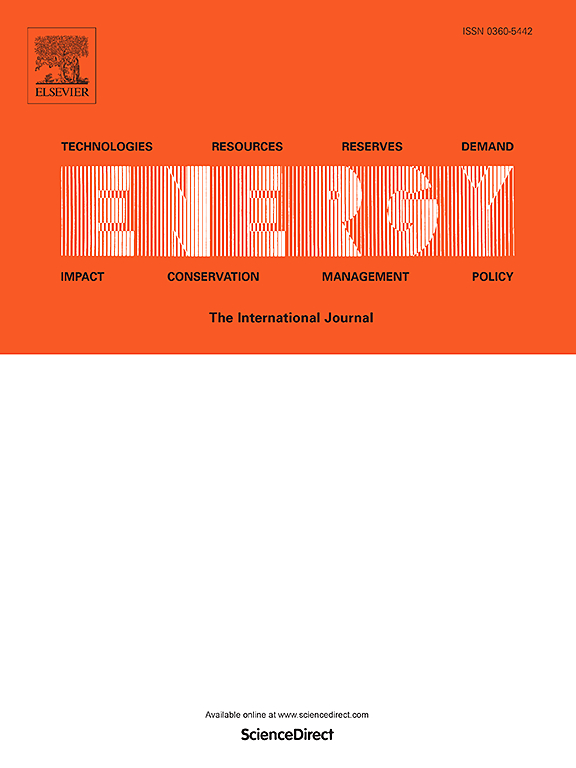水平井在含水层压缩空气蓄能中的适用性研究
IF 9
1区 工程技术
Q1 ENERGY & FUELS
引用次数: 0
摘要
枯竭油气藏是一种适合于含水层压缩空气储能的储气系统,为管理可再生能源的可变性提供了一种解决方案。尽管水平井在CAESA中的应用研究有限,但利用现有水平井而不是钻新水平井是降低CAESA成本的关键。本研究以水平井为例对CAESA进行建模,分析了其运行特性,包括风量分数、压力分布、时间压力变化和能量回收效率,并将其与直井进行了一年的比较。除井附近空气体积分数和压力外,水平井CAESA的空气体积分数和压力与直井CAESA相似。在气泡形成初期,水平井压力趋势与直井压力趋势一致。在日常作业中,水平井的平均压力为10.24 MPa,而直井的平均压力为10.15 MPa。水平井实现了780 kW的稳定输入火用率和774 kW的输出功率,其能量回收率约为99.2%,而直井的能量回收率为99.5%。总体而言,CAESA在水平井中的应用与直井具有相当的操作特性,证明了其巨大的适用性。本文章由计算机程序翻译,如有差异,请以英文原文为准。
Study on the applicability of a horizontal well in compressed air energy storage in aquifer
Depleted hydrocarbon reservoir is a suitable gas storage system for compressed air energy storage in aquifer (CAESA), presenting a solution for managing the variability of renewable energy. Utilizing an existing horizontal well instead of drilling a new one is key to reducing CAESA costs, though research on horizontal well applications in CAESA is limited. This study models CAESA with a horizontal well and analyzes its operational characteristics, including air volume fraction, pressure distribution, temporal pressure variation, and energy recovery efficiency, comparing it to a vertical well over a year. The air volume fraction and pressure in the CAESA with horizontal well are similar to those in the CAESA with vertical well, except near the well. During initial gas bubble formation, horizontal well pressure trends align with that of the vertical well. In daily operations, the horizontal well averages 10.24 MPa pressure versus 10.15 MPa for the vertical well. The horizontal well achieves a stable input exergy rate of 780 kW and an output of 774 kW, resulting in about 99.2 % energy recovery efficiency, compared to 99.5 % for the vertical well. Overall, CAESA with a horizontal well shows comparable operational characteristics to a vertical well, demonstrating its substantial applicability.
求助全文
通过发布文献求助,成功后即可免费获取论文全文。
去求助
来源期刊

Energy
工程技术-能源与燃料
CiteScore
15.30
自引率
14.40%
发文量
0
审稿时长
14.2 weeks
期刊介绍:
Energy is a multidisciplinary, international journal that publishes research and analysis in the field of energy engineering. Our aim is to become a leading peer-reviewed platform and a trusted source of information for energy-related topics.
The journal covers a range of areas including mechanical engineering, thermal sciences, and energy analysis. We are particularly interested in research on energy modelling, prediction, integrated energy systems, planning, and management.
Additionally, we welcome papers on energy conservation, efficiency, biomass and bioenergy, renewable energy, electricity supply and demand, energy storage, buildings, and economic and policy issues. These topics should align with our broader multidisciplinary focus.
 求助内容:
求助内容: 应助结果提醒方式:
应助结果提醒方式:


